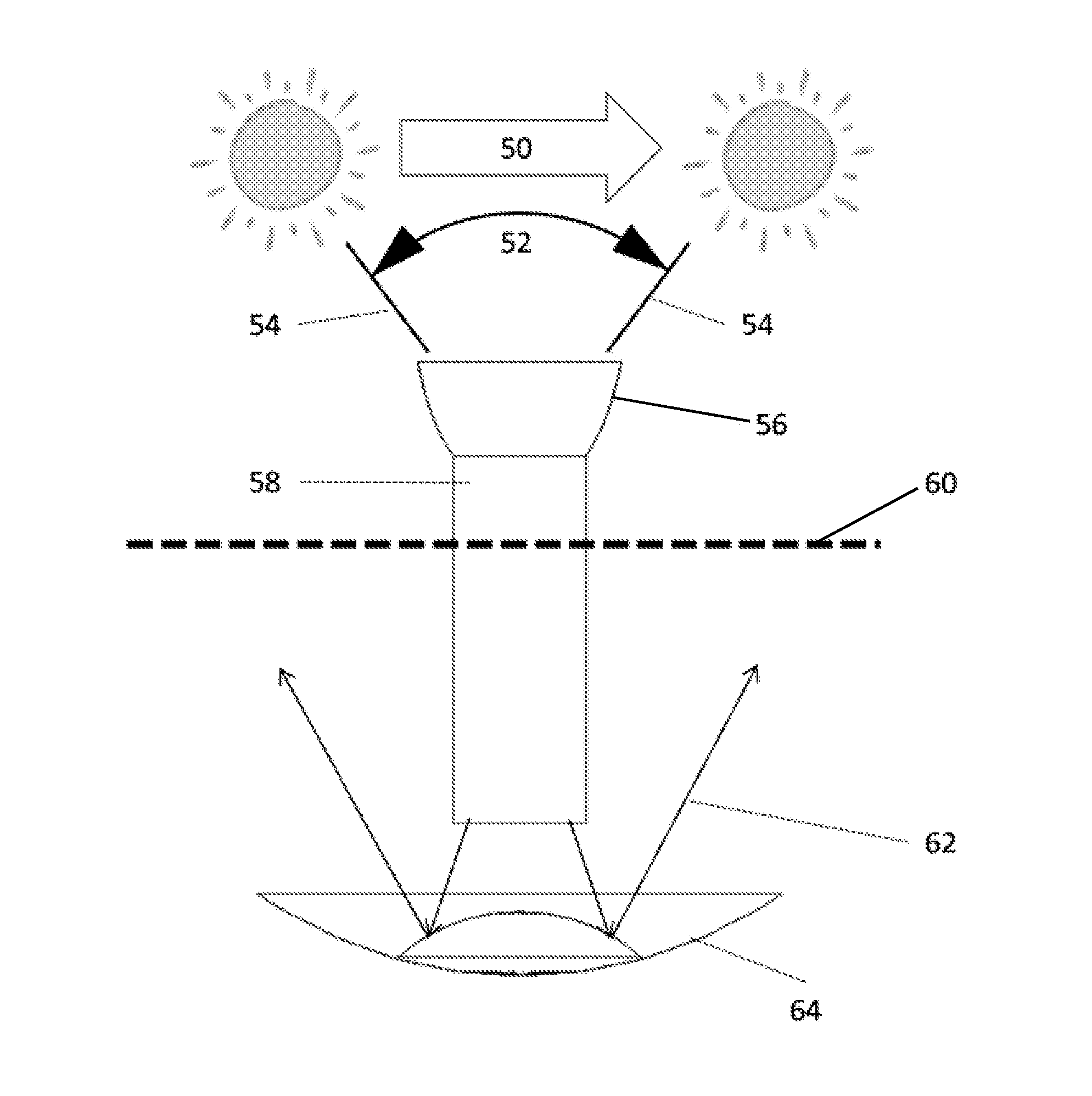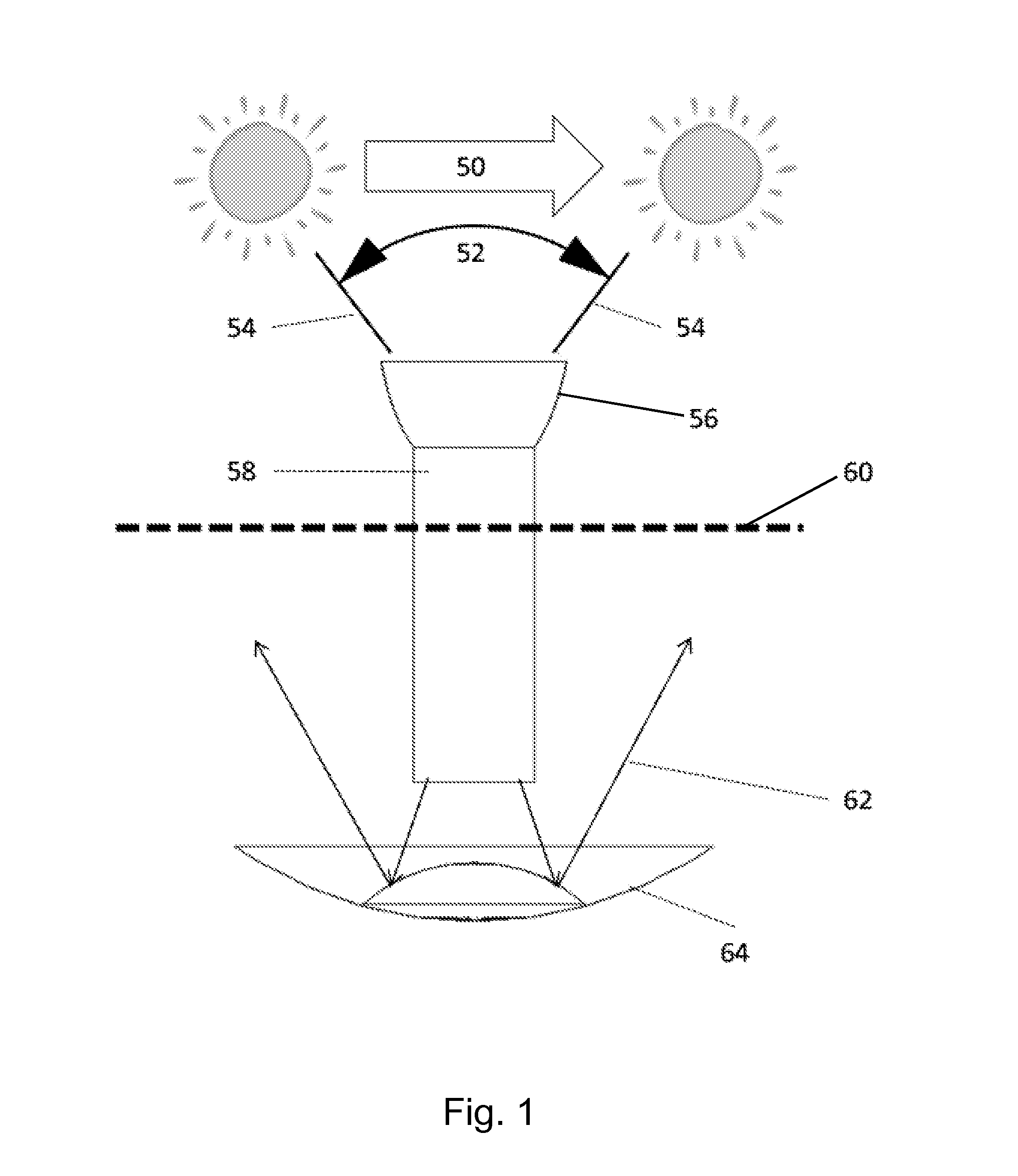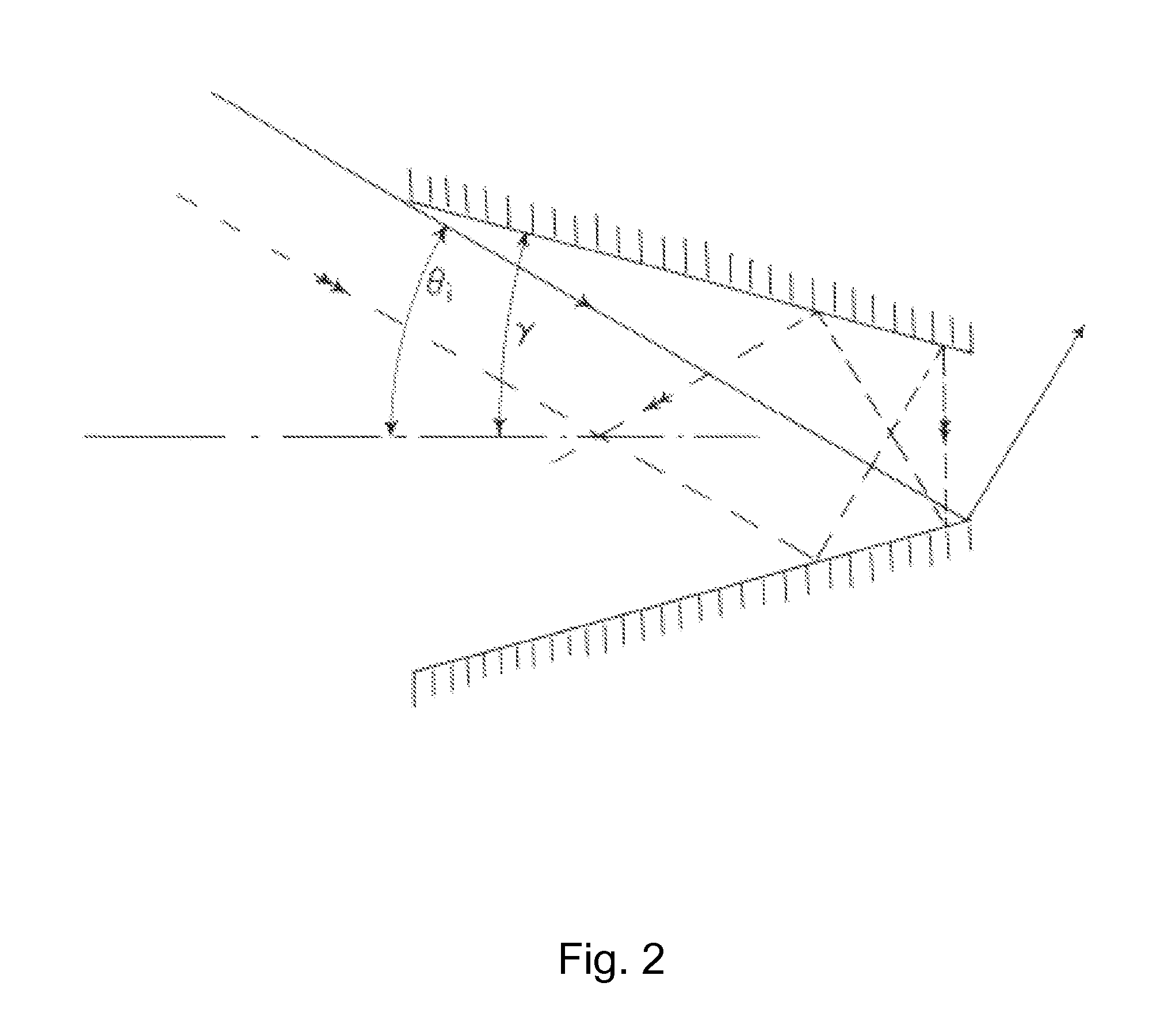Harvesting, transmission, spectral modification and delivery of sunlight to shaded areas of plants
a technology of spectral modification and harvesting, applied in the direction of using daylight, renewable energy machines, instruments, etc., can solve the problems of limiting the use of light in agricultural production, all the leaves of a plant cannot be exposed to maximum solar radiation, and the overall benefit of improving the irradiation of plant tissue by pruning may not be realized, so as to improve the utilization of light and enhance plant growth and development, the effect of stimulating plant growth
- Summary
- Abstract
- Description
- Claims
- Application Information
AI Technical Summary
Benefits of technology
Problems solved by technology
Method used
Image
Examples
Embodiment Construction
[0037]The following description is provided to enable any person skilled in the art to make and use the invention and sets forth the best modes contemplated by the inventor of carrying out his invention. Various modifications, however, will remain readily apparent to those skilled in the art, since the general principles of the present invention have been defined herein specifically to provide a system to collect solar energy and deliver it to strategic locations within the canopy of a growing plant.
[0038]FIG. 1 shows a general overview of the components used in one embodiment of the present invention. The diagrammatic arrow 50 represents the daily movement of the sun relative to the harvester / collector component, a compound parabolic concentrator (CPC) reflective element 56. The lines 54 represent the acceptance limits of the CPC, and these limits define the acceptance angle 52. The CPC 56 transmits light through a light pipe 58 which penetrates the canopy 60 and projects the light...
PUM
 Login to View More
Login to View More Abstract
Description
Claims
Application Information
 Login to View More
Login to View More - R&D
- Intellectual Property
- Life Sciences
- Materials
- Tech Scout
- Unparalleled Data Quality
- Higher Quality Content
- 60% Fewer Hallucinations
Browse by: Latest US Patents, China's latest patents, Technical Efficacy Thesaurus, Application Domain, Technology Topic, Popular Technical Reports.
© 2025 PatSnap. All rights reserved.Legal|Privacy policy|Modern Slavery Act Transparency Statement|Sitemap|About US| Contact US: help@patsnap.com



